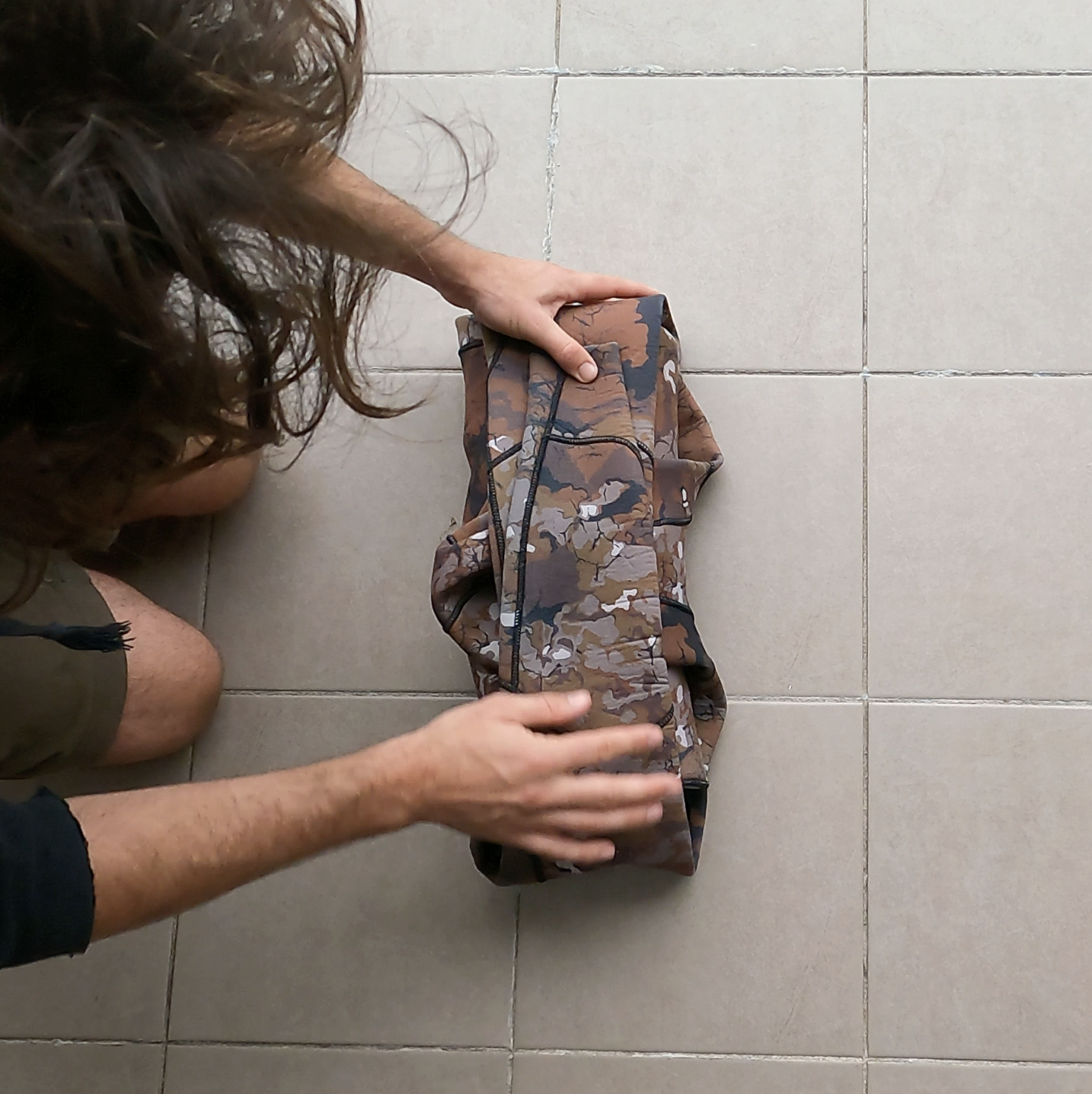How to Correctly Store an Open-Cell freediving Wetsuit
An open-cell wetsuit is a prized possession for any water sports enthusiast, offering superior warmth and flexibility. With winter approaching and most divers swapping over to their thicker suits the summer gear will have to go into storage. Proper storage is essential to maintain its longevity and performance. Here’s a comprehensive guide to ensure your open-cell wetsuit remains in top condition.
Use a wetsuit wash and inspect your suit for algae growth during cleaning
1. Thorough Cleaning After Use
Before storing your wetsuit, it's crucial to clean it thoroughly. Salt, sand, and organic matter can degrade the neoprene over time as well as cause alage and mould growth.
Rinse with Fresh Water: Immediately after use, rinse your wetsuit with fresh water to remove salt, sand, and any other residues. Use a hose or soak it in a tub.
Mild Soap Solution: For a deeper clean, use a mild soap or a specialized wetsuit cleaner. Avoid harsh detergents that can damage the neoprene. BUY YOUR OWN HERE
Inside-Out Cleaning: Open-cell wetsuits have an unlined interior that adheres to the skin. Turn the wetsuit inside out and gently scrub the interior with your hands, ensuring all areas are clean.
Thorough Rinse: Rinse again thoroughly to remove any soap residues.
hang your wetsuit inside out to dry
2. Proper Drying Techniques
Drying your wetsuit correctly is crucial to prevent mold and mildew.
Hang to Drip Dry: Hang your wetsuit on a wide hanger, ideally designed for wetsuits, to avoid stretching the neoprene. A wetsuit hanger with shoulder contours helps maintain the suit’s shape.
Shade and Ventilation: Dry the wetsuit in a shaded, well-ventilated area. Direct sunlight can damage the neoprene and cause it to lose flexibility.
Inside-Out Drying: Start by drying the wetsuit inside out. Once the inside is dry, turn it right-side out to dry the exterior. remeber to keep it out of the sun especially during this stage as it can easily melt your neoprene.
loosely roll suit to prevent creasing
3. Storage Conditions
Storing your wetsuit properly when not in use is essential for its longevity.
Cool and Dry Environment: Store your wetsuit in a cool, dry place. Avoid areas with extreme temperatures or high humidity.
Avoid Folding: Folding the wetsuit can create creases that weaken the neoprene. Instead loosely rolling each piece will help prevent this creasing. this is also the recommended way to prepare your wetsuit for travel.
Use a Wetsuit Hanger: Hanging your wetsuit on a wetsuit hanger is the best way to maintain its shape if you have the space to do so. Ensure the hanger is wide and padded to distribute the weight evenly.
once packed store in a dry location, take care to not place heavy objects on top
4. Long-Term Storage Tips
For extended periods of storage, follow these additional tips:
Loosely Roll if Necessary: If space is an issue and you need to store the wetsuit in a smaller area, loosely roll it instead of folding.
Avoid Heavy Items: Ensure no heavy items are placed on top of the wetsuit to prevent compression damage.
Regular Inspections: Periodically check your stored wetsuit for any signs of damage, mold, or pests.
5. Preventive Maintenance
Regular maintenance can help prolong the life of your open-cell wetsuit.
Repair Small Tears: Address any small tears or punctures immediately with a wetsuit repair kit to prevent further damage.
Avoid Chemicals: Keep your wetsuit away from oils, gasoline, and other chemicals that can degrade the neoprene.
By following these guidelines, you can ensure that your open-cell wetsuit remains in excellent condition, providing you with optimal performance and comfort for many seasons to come. Proper care and storage not only extend the lifespan of your wetsuit but also enhance your overall diving experience.




